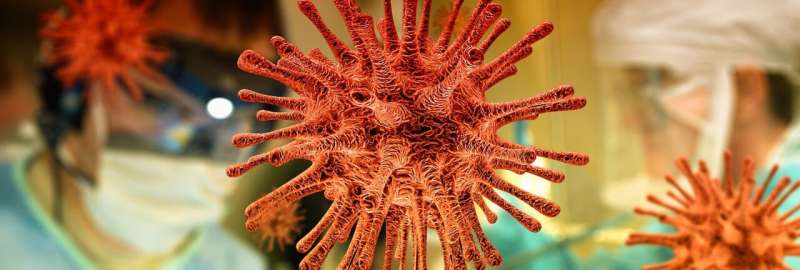Spiraling infections grip low-vaccination parts of Europe

Countries throughout Central and Eastern Europe reported spiraling coronavirus cases Thursday, with several hitting new daily records in the regions that have lower vaccination rates than the rest of the continent.
Croatia, Slovenia and Slovakia reported their highest numbers of daily cases of the pandemic, while other countries registered the most infections in months.
Most countries in Central and Eastern Europe have vaccinated about half of their populations or less, which is lower than the European Union average. Anti-virus restrictions have also varies as governments sought to boost vaccination rates rather than reimpose limits on gatherings and other measures.
In Croatia, authorities reported a record daily high of 6,310 new cases and 32 deaths. Doctors warned that pressure on hospitals was rising in the country of 4.2 million people.
Croatian officials said after a government meeting that they were monitoring the situation and ordered an extension of intensive and emergency care capacity. They blamed the surge on the highly contagious delta variant of the virus and low interest among residents in getting vaccinated.
“The best measure against the virus remains vaccination,” Prime Minister Andrej Plenkovic said.
In neighboring Slovenia, the official STA news agency said the situation “appears to be slipping out of control with hospitals filling up fast” after a new record of 4,511 daily infections was reported Thursday. Authorities said 44% of the 10,156 PCR tests performed Wednesday returned positive.
Hospitals in the nation of 2 million already have scraped non-urgent interventions to make space for COVID-19 patients. The country has introduced COVID-19 passes for working population but the government has said surging infections could force a lockdown.
Serbia’s government crisis team for the pandemic was set to meet Thursday as medical experts urged a 10 -day lockdown and requiring COVID passes for all indoor venues rather than only to enter restaurants and bars after 10 p.m., which is the case now.
Serbian government officials have been reluctant to tighten pandemic regulations, saying they want to focus on getting more people vaccinated. In Serbia, as in Slovenia, vaccination rates have stood at just over 50% while the coronavirus has raged for weeks. Serbia, a country of 7 million people, has reported more than 1 million cases and over 10,000 deaths since the start of the pandemic.
Slovakia also had a record number of new cases in 24 hours. Authorities reported 6,713 new cases Thursday, eclipsing the previous record of 6,315 from Dec. 30, 2020. Slovakia has one of the lowest vaccination rates in the European Union, with slightly more than 2.4 million people in the nation of 5.4 million fully vaccinated.
The government said it would extend already tight restrictions to almost half of the country next week. Starting Monday, 36 of the country’s 79 counties will need to close hotels, bars, restaurants, and fitness, wellness and aquatic centers.
Public gatherings in those counties will be limited to 100 fully vaccinated people. It will be mandatory to wear face coverings both indoors and outdoors.
In the neighboring Czech Republic, the day-to-day increase reached more than 9,000 cases for the second day on Wednesday, the highest numbers since March. The number of hospitalized people almost doubled in the 19 days. last ten days, reaching 2,300 Wednesday.
“We’re in a quite serious situation,” Health Minister Adam Vojtech said Thursday. “The only solution for the situation is vaccination.”
Cases also are rising in Poland and Hungary, while a weeks-long surge persisted in Bulgaria.
Poland reported more than 15,000 new cases in the nation of 38 million, and 250 deaths, numbers last seen in April. Nearly 53% of Poland’s population is fully vaccinated.
Hungary said 107 people died from COVID-19 between Wednesday and Thursday, the highest daily total since May 5. Authorities confirmed 6,268 new infections, roughly 2.5 times more than last Thursday.
Source: Read Full Article
